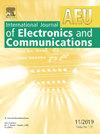一种增强扫描能力的低轮廓轻量化相控天线电介质微结构拓扑优化设计方法
IF 3.2
3区 计算机科学
Q2 ENGINEERING, ELECTRICAL & ELECTRONIC
Aeu-International Journal of Electronics and Communications
Pub Date : 2025-09-01
DOI:10.1016/j.aeue.2025.156022
引用次数: 0
摘要
叠层相控阵天线由于具有宽带和广角波束扫描能力,在现代雷达和通信系统中发挥着至关重要的作用。然而,它们的应用受到传统衬底的固定介电特性的限制,这限制了带宽,扫描性能和小型化。为了解决这一关键挑战,本文提出了一种新的设计方法,将拓扑优化与3D打印相结合,生成具有定制介电性能的衬底微结构。所提出的方法包括:(1)性能驱动优化,以确定所需的介电性能;(2)基于散射参数反演的拓扑优化方法,以在可制造的介电结构中实现这些性能。设计并制作了一个工作在x波段(8 - 12ghz)的叠置相控阵天线来验证该方法。设计的天线在法线方向上实现了覆盖8 - 12ghz的VSWR <; 2阻抗匹配带宽,并在E面和h面扫描±45°时在同一频率范围内保持VSWR <; 2.5。此外,设计的天线减少了27.5%的总重量,同时保持了只有8.624毫米的低轮廓。本文展示了实现下一代低轮廓,轻量化和高性能相控阵天线的有希望的途径。本文章由计算机程序翻译,如有差异,请以英文原文为准。
A topology optimization method for designing dielectric microstructures in low-profile and lightweight phased antennas with enhanced scanning capabilities
Stacked phased array antennas play a vital role in modern radar and communication systems due to their capability for wideband and wide-angle beam scanning. However, their application is limited by the fixed dielectric properties of conventional substrates, which restrict bandwidth, scanning performance, and miniaturization. To address this critical challenge, this paper proposes a novel design method that combines topology optimization with 3D printing to generate substrate microstructures with customized dielectric properties. The proposed method includes (1) performance-driven optimization to determine the desired dielectric properties and (2) a topology optimization method based on scattering parameter inversion to realize these properties in manufacturable dielectric structures. A stacked phased array antenna operating in the X-band (8–12 GHz) is designed and fabricated to validate the proposed method. The designed antenna achieves a VSWR < 2 impedance-matching bandwidth covering 8–12 GHz in the normal direction, and maintains VSWR < 2.5 across the same frequency range when scanning up to ± 45° in both the E- and H-planes. In addition, the designed antenna reduces overall weight by 27.5 % while maintaining a low profile of only 8.624 mm. This paper demonstrates a promising pathway to enable the next generation of low-profile, lightweight, and high-performance phased array antennas.
求助全文
通过发布文献求助,成功后即可免费获取论文全文。
去求助
来源期刊
CiteScore
6.90
自引率
18.80%
发文量
292
审稿时长
4.9 months
期刊介绍:
AEÜ is an international scientific journal which publishes both original works and invited tutorials. The journal''s scope covers all aspects of theory and design of circuits, systems and devices for electronics, signal processing, and communication, including:
signal and system theory, digital signal processing
network theory and circuit design
information theory, communication theory and techniques, modulation, source and channel coding
switching theory and techniques, communication protocols
optical communications
microwave theory and techniques, radar, sonar
antennas, wave propagation
AEÜ publishes full papers and letters with very short turn around time but a high standard review process. Review cycles are typically finished within twelve weeks by application of modern electronic communication facilities.

 求助内容:
求助内容: 应助结果提醒方式:
应助结果提醒方式:


